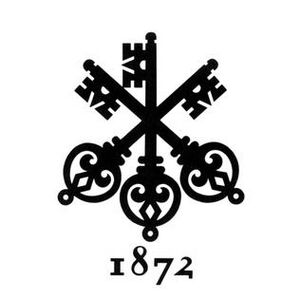Warja Lavater facts for kids
Quick facts for kids
Warja Lavater
|
|
|---|---|
| Born |
Warja Lavater
28 September 1913 |
| Died | 3 May 2007 (aged 93) Zurich, Switzerland
|
| Nationality | Swiss |
| Education | Graphic arts |
| Known for | Artists' Books |
| Movement | Modernism, Bauhaus, Arts and Crafts |
Warja Lavater (born September 28, 1913 – died May 3, 2007) was a talented Swiss artist and illustrator. She is best known for her unique "artist's books." These special books are made in an accordion-fold style. Instead of using words or even regular pictures, she retold classic fairy tales using only symbols.
Contents
About Her Life
Warja Lavater spent her early childhood in Moscow and Athens. In 1922, her family moved back to Winterthur, Switzerland. After finishing high school, she studied graphic arts in Zurich from 1931 to 1935. This was at the School of Applied Arts. She learned a lot about design and drawing there.
In 1937, she opened her own design studio in Zurich. Here, she started her career creating symbols, logos, and trademarks. Some of her first designs include the three-key logo for the Swiss Bank Corporation (now UBS) and the logo for the Swiss National Exhibition of 1939.
She married Gottfried Honegger in 1940 and had two daughters, Bettina and Cornelia. From 1944 to 1958, she worked on a children's magazine called Jeunesse. She designed the covers and created illustrations for it.
In 1958, Lavater moved to New York City. There, she started designing scientific illustrations. In New York, she became interested in how American street advertising used simple pictures. This inspired her to use "pictograms" in her art. Pictograms are like small pictures that stand for words or ideas.
In 1962, the New York City Museum of Modern Art published her book William Tell. It was a single sheet of paper, folded like an accordion. The story was told entirely with symbols, and a key explained what each symbol meant. For example, a blue dot might represent William Tell. She continued to create many similar symbol-based books throughout her life.
Later, around 1995, she began making videos. These videos showed colors and symbols moving across a screen, set to music. Warja Lavater passed away in 2007 at the age of 93. She is buried in Zurich. Her art collection is kept at the Zurich Central Library. She was also a direct descendant of a famous Swiss poet, Johann Kaspar Lavater.
Her Special Artist's Books
Warja Lavater's book William Tell was published in 1962. Around the same time, other artists were also exploring new ways to make books. Some people thought another artist's book, published in 1962 or 1963, was the first modern "artist's book." However, Warja Lavater's work, along with that of another Swiss-German artist named Dieter Roth, actually came out earlier. This shows she was a pioneer in this art form.
Starting in 1963, a publisher in Paris named Adrien Maeght began publishing a series of her folding books. These books were called Imageries. They retold classic fairy tales from famous writers like the Brothers Grimm, Charles Perrault, and Hans Christian Andersen. Just like William Tell, these books were accordion-folded. They told stories using only symbols, without any written words.
How Her Art Helps Learning
Warja Lavater's unique art has been used by teachers to help children learn about art and reading. The National Library of France has encouraged kids to create their own art using Lavater's methods. Teachers at the University of Erfurt have even created guides. These guides help teach reading and creativity to young children. They use Lavater's symbol versions of fairy tales like Snow White and Hans in Luck.
Awards She Won
- Pixel-INA award in the Art category
- European award of Media Invest Club
- "meilleure bande son" (best sound track)
- Nominated for the Hans Christian Andersen Award (Illustration) in 1992
Images for kids





